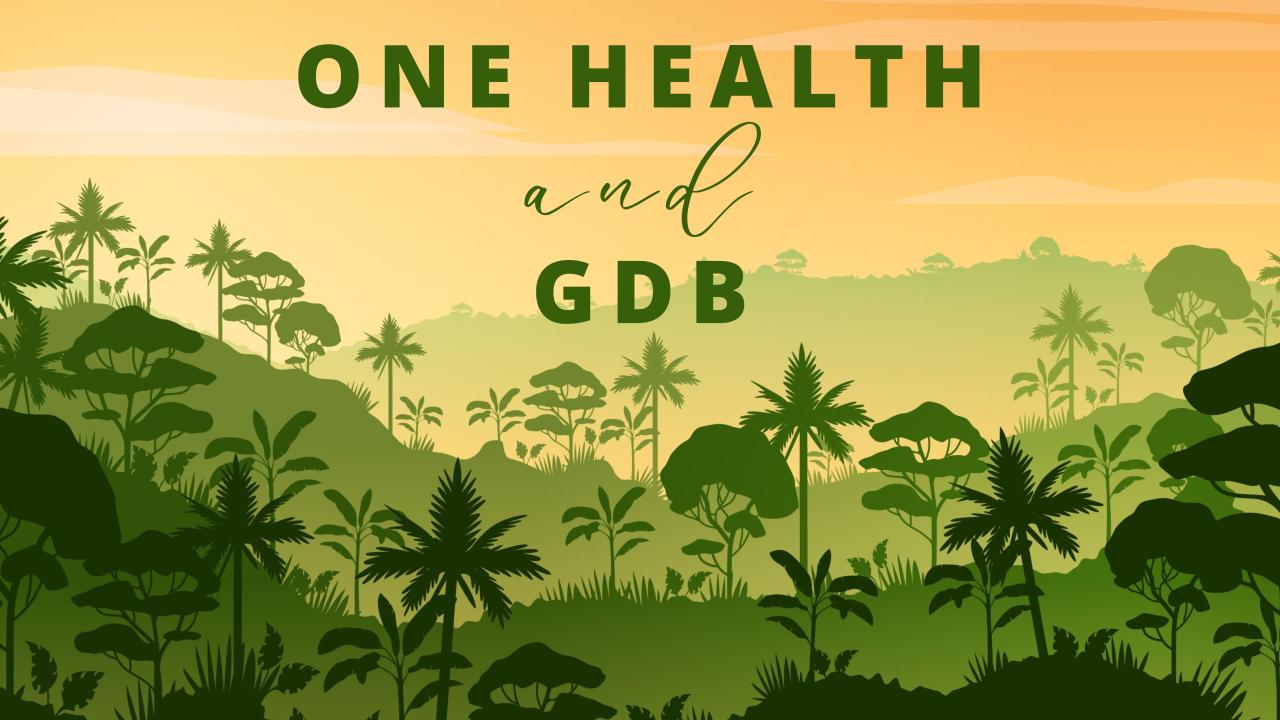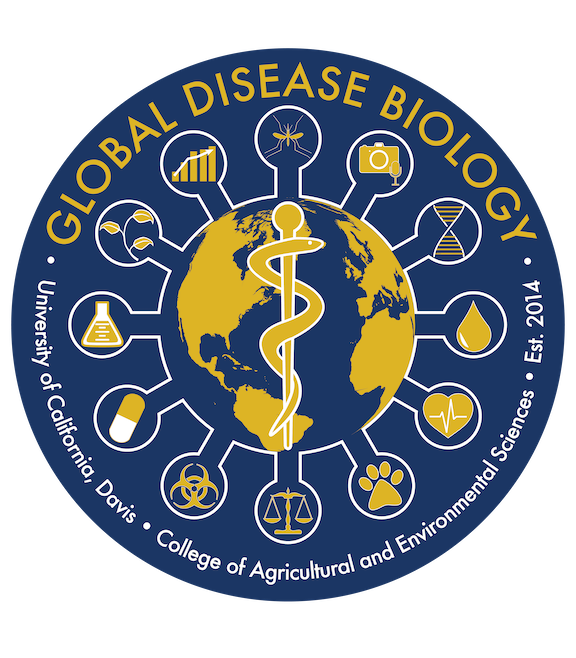
One Health and GDB: Human Health
Human Health in the Eyes of One Health
Human health is an important part of the One Health triad. Incorporating One Health methods in human healthcare can expand healthcare workers’ understanding of the health issues affecting the individuals, communities, or populations they are working with. A One Health approach encourages healthcare professionals to consider the entire person/people they are working with in the context of their environment. According to the WHO, “Health is a state of complete physical, mental, and social well-being and not merely the absence of disease or infirmity” [1]. One Health recognizes that a person’s health is influenced by their interactions with other people, animals, and the physical environment they live in. The concept of One Health originates from the concept of One Medicine; the beginnings of One Medicine can be traced back to Rudolf Virchow, a German physician and pathologist in the 19th century [2]. He argued that human and animal medicine should not be considered two distinct, unrelated disciplines. Other physicians and veterinarians continued to apply this new line of thought in their practices, and eventually, in 1984, Dr. Calvin Schwabe officially named this concept “One Medicine” [3]. Dr. Schwabe, who served as chair of the Department of Epidemiology and Preventative Medicine at the UC Davis School of Veterinary Medicine, used the One Medicine concept to address zoonotic disease issues [2]. One Medicine later evolved into One Health, which emphasized the promotion of health beyond just the treatment of disease, and incorporated the recognition of the complex interactions between humans, animals, and their environment in the context of disease.
One Health in Action
The One Health method has become a more widespread practice used to address disease concerns. A One Health response to a disease outbreak involves the use of multiple disciplines collaborating together to address disease concerns from multiple fronts. This multifaceted approach allows the disease response team to consider how the pathogen interacts with and is transmitted between different organisms, including people, plants, and animals. As human populations expand and continue to engage in practices that contribute to climate change, a One Health approach becomes essential to addressing disease concerns. As the human population grows, the division between human and wildlife habitats begins to deteriorate. This opens the door for closer interactions between humans and animals, which facilitates the spread of disease [4]. The rise of globalization in our world has also facilitated the spread of disease by enabling humans, animals, plants, and pathogens to reach every corner of the world in a matter of hours.
Crimean-Congo Hemorrhagic Fever in Kazakhstan
Crimean-Congo Hemorrhagic Fever is a viral disease spread that can infect humans through the bite of an infected tick or via direct contact with bodily fluids of infected animals or humans [5]. CCHF can be found in some parts of Europe, Africa, and Central Asia. Some of the symptoms include fever, headache, joint pain, vomiting, red eyes, jaundice, and bleeding as the hemorrhagic fever becomes more severe. Controlling outbreaks of this disease can be difficult due to contain, but employing the One Health method can help confront the disease from multiple fronts. For example, Kazakhstan’s CDC and multiple health departments came together in the 2010s to launch a One Health based approach to controlling CCHF infections in the Zhambyl region [6]. They sent teams of epidemiologists, veterinarians, nurses, and entomologists to 30 different villages to take blood samples from people and livestock. The blood was tested to reveal the presence of a past CCHF infection. Ticks and other animals were also tested, and households were interviewed to understand their knowledge and attitude towards CCHF and its risk factors. This approach considers how CCHF moves from host to host and recognizes the impact that human behavior and health education can have on disease control and prevention.
Rift Valley Fever
Rift Valley Fever is a viral, mosquito-borne disease that affects both humans and animals [7]. Once a mosquito transmits the virus to a mammalian host, the virus can then be transmitted between mammalian hosts via direct contact with infected blood or tissue. RVF has caused outbreaks in Africa and the Middle East, and a surge in cases can be seen during periods of heavy rainfall because of the mosquito habitat created from flooding. However, scientists can predict when periods of rainfall are likely to occur by monitoring changes in ocean temperature through satellite imagery. NASA scientists can collect this data and share it with RVF control teams so they know when to expect a surge in cases. Additionally, the disease can also be controlled through the vaccination of animals. These vaccines are both effective and affordable, and combined with reliable weather predictions, can help protect both people and animals from RVF.
Careers in Human Health
There are many career options available if you’re interested in working in the human health sector. If you’re interested in learning more about healthcare careers, want to know how to prepare for graduate or professional school, or just want to speak to an advisor about the options, you can visit UC Davis’s Health Professions Advising Department. Their advising team can provide you with information about multiple health professions, for example, medicine, allied health fields, public health, pharmacy, and more.
Additional careers in human health are listed below:
- Social Worker
- Public Health Specialist
- Environmental Health Inspector
- Epidemiologist
- Healthcare Administrator
- Community Health Worker
- Counselor
- Rehabilitation Counselor
- Substance Abuse Counselor
- Medical Professional
- Physician
- Nurse
- Occupational Therapist
- Physician’s Assistant
Sources
[1] Constitution of the World Health Organization. Available at:
https://www.who.int/about/governance/constitution (Accessed: 22 January 2025).
[2] Gyles, C. (2016) ‘One Medicine, One Health, One World’, The Canadian Veterinary Journal, 57(4), pp.
345–346.
[3] Preston, E.C. (2019) Calvin Schwabe Lectureship | School of Veterinary Medicine. Available at:
https://ohi.vetmed.ucdavis.edu/education/calvin-schwabe-lectureship (Accessed: 24 January
2025).
[4] CDC (2024) About One Health, One Health. Available at: https://www.cdc.gov/one-
health/about/index.html (Accessed: 23 January 2025).
[5] CDC (2024) About Crimean-Congo Hemorrhagic Fever, Crimean-Congo Hemorrhagic Fever. Available at:
https://www.cdc.gov/crimean-congo-hemorrhagic/about/index.html (Accessed: 27 January
2025).
[6] CDC (2024) Understanding Crimean-Congo Hemorrhagic Fever in Kazakhstan, One Health.
Available at: https://www.cdc.gov/one-health/php/stories/cchf.html (Accessed: 23 January
2025).
[7] CDC (2024) The Story of the Rift Valley Fever Virus Vaccine, One Health. Available at:
https://www.cdc.gov/one-health/php/stories/rvf-virus-vaccine.html (Accessed: 23 January 2025).
